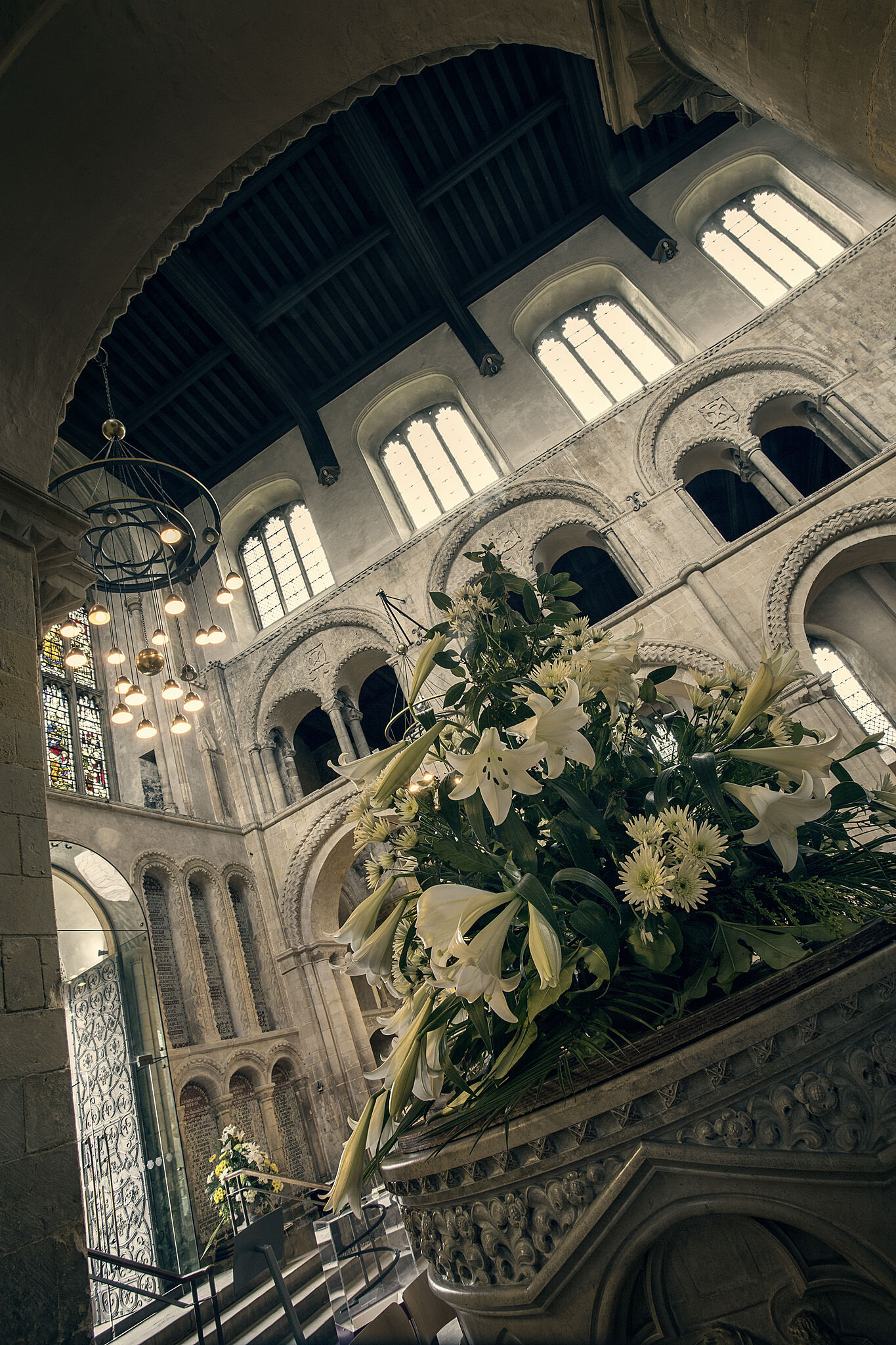Rochester Cathedral, South East England

In 43 AD, the Romans landed in Kent under Aulus Plautius and forced the Britons back to the river Medway. A walled town grew next to the river, along what is todays High Street in Rochester. The area comprised around 23 acres. The Romans used Rochester as a posting station (a small town on a main road, where travelling officials could find an inn) and fortified it to guard the river. In the early 7th Century, Bishop Justus arrived and founded the diocese of Rochester, which was then only the second in the country after Canterbury. He was consecrated into his position by Bishop Augustine, who had established the church at Canterbury.
Because of its location on the River Medway, which guards the approach to London, Rochester was vulnerable to attacks by Viking raiders. The Danes were a constant threat, and the Cathedral was destroyed on more than one occasion. When the city was besieged in 884, its citizens managed to withstand this attack until King Alfred and his army relieved them.
The Normans arrived in the 11th Century and rebuilt the Cathedral at Rochester. William the Conqueror installed Bishop Gundulf at Rochester, in 1077. Bishop Gundulf (1077-1108) laid out the plan of the nave and choir, his work can still be seen in the nave’s arcading. Rochester is the smallest of the English medieval Cathedrals, and was consecrated in 1130. King Henry I attended the consecration ceremony.
Medieval monastic foundations at Cathedrals were Priories, rather than Abbeys, and they were ruled over by the Prior with support from the Bishop. Ordowinus was appointed as the first Prior of Rochester, and he witnessed its Charter of Foundation on the 20th of September 1089. Bishop Gundulf established the Benedictine Priory at Rochester with 22 monks, which grew to 60 monks by the time of his death in 1108.
The west front is still very much Romanesque, although the great gothic window, which was added later, is the dominant feature. This large Perpendicular window was added in the late 15th Century, but if we look past this, all of the small Romanesque arches belong to the 12th Century.
The crypt is the oldest part of the present Cathedral. It is set out in seven aisles, which originally housed seven chapels.
Following the signing of the Magna Carta in 1215, the rebel barons seized the castle at Rochester. In response to this action, King John marched his army on the castle and set up his base inside the Cathedral, which was ruthlessly plundered by his men. The Cathedral was desecrated again in 1264, when Simon de Montfort and his army captured the city.
The Wheel of Fortune painting in the choir is a fragment of a 13th Century wall painting.
Walter de Merton was Lord Chancellor of England, Archdeacon of Bath and founder of Merton College at Oxford. He was also the Bishop of Rochester. He died after falling from his horse in 1277 and is buried in Rochester Cathedral.








